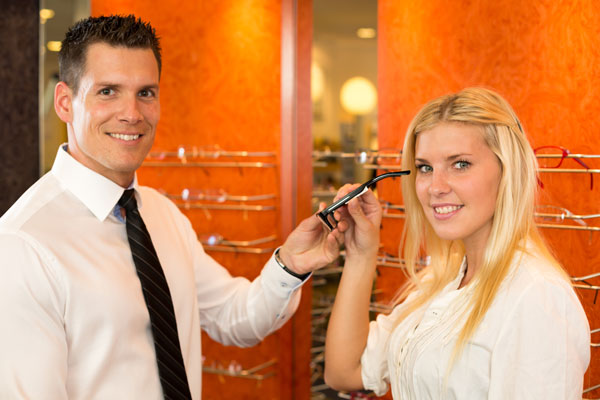By Linda Conlin, ABOC/NCLEC
I was dispensing a pair of glasses to a patient I hadn’t seen for the initial fit. As I leaned in to place the glasses on his face he said, “Now, don’t get scared.” In the split second between that statement and his next, I hesitated and wondered what was going to happen. It’s amazing what you can think of in a very short period of time! Would he bite? Have a seizure? Faint? It was a combination of relief and compassion when the patient told me he had a prosthetic nose. His nose had been removed due to cancer and replaced by a latex form. I had to look closely at his bridge to see the very fine line of the prosthesis.
Before I put the glasses on him, I asked him to point to the facial bones that remained around his nose so I could adjust the nosepads to rest there. I let the patient guide me to where he could tolerate even the slight pressure of the lightweight frame and lenses. This was a case in which the patient knew more about fitting the glasses than the optician. It wasn’t long before the man left with his new glasses and I was left with a new insight into fitting and dispensing challenges. In a nutshell, ALWAYS listen to the patient!

Fitting challenges
This patient was a poignant reminder that every patient has unique visual, and frequently physical, issues. As eye care professionals, we need to have a little common sense knowledge of a variety of conditions, their manifestations, and how to work to provide functional, comfortable and attractive glasses for every patient. One size or type of frame, like one size or type of lens doesn’t work for all.
While this patient had no bridge, and was a unique case, we frequently encounter Asian- and African-Americans who have flat bridges. It can be easy to ignore this feature in the name of fashion or just plain lack of consideration. In addition to bridge fit, we need to be aware that the space between the bridge and cheeks may be shorter, directing our attention to the depth of the frame. These patients may have “made do” with poorly fitting frames before, but they shouldn’t have to.
Metal frames have always been the go to for patients with flat bridges, but a number of manufacturers have developed lines of zyl frames that have bridges specially designed to fit adults in this demographic. It’s interesting to note that zyl frames with built up bridges for children have been around for decades, while adults have been ignored. Perhaps it took the renewed popularity of zyl frames to instigate new bridge designs for all age groups.
This month’s CE, There’s a Hole in Your Frame Board, gives background on the development of zyl frames for patients with flat bridges, as well as tips on style and merchandising. Learn more at www.2020mag.com/ce. Don’t let it scare you. We’re not in a “one size fits all” business, but with some thought and sensitivity, we can provide individually tailored eyewear for all.












